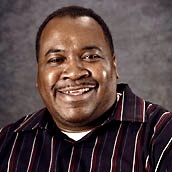 David Shephard (Photo: Dan Gair/Blind Dog Photo, Inc.)
The woman was taken to the hospital where a rape kit was taken.
The victim was unable to provide a detailed description of her attackers. She said that one of them referred to the other as “Dave.”
A week later, the police recovered the victim's car, a 1978 Camaro, near a terminal building at Newark International Airport. They found her purse in a trash bin close to where the car was abandoned. There were no fingerprints recovered.
As a result, the police focused their investigation on people who had connections to the airport. The police called the administrator in charge of the ground crew. Subsequently, the administration arranged to exhibit the crew to the victim, identifying those staff members whose names were Dave.
Among those was 21-year-old David L. Shephard, whose responsibilities included directing jets to the departure gates. Shephard and his girlfriend were expecting their first child. They planned to marry and possibly buy a house.
On New Year’s Eve, 1983, when Shephard went to pick up his paycheck, he and other employees had to walk through a specially-assembled tent in a hangar. There were two employees named Dave, and both were pointed out by a supervisor. The victim, who was watching the employees from behind a stack of boxes, said that Shephard was one of the rapists.
Afterward, the police said they wanted to talk to him about a stolen car. But when he got to the police station, he was arrested immediately. He was charged with rape, robbery, making terroristic threats, and weapons violations.
In September 1984, Shephard went to trial in Union County Superior Court. The victim testified that she was certain Shephard had raped her. She testified that she not only recognized him by sight, but also remembered his voice.
The prosecution introduced evidence that serology testing of the rape kit contained antigens and a secretor type that was the same at Shephard.
Shephard testified and denied committing the crime. He told the jury that he had been at work on the evening of the rape. Family members also testified and told the jury that he had left the house and returned as usual.
A friend testified that she had a lengthy phone conversation with Shephard at about 6 p.m. that Christmas Eve, about the time of the abduction. His mother testified that her son was present when she returned home at about 6:45 p.m., about the time the crime was still being committed.
The defense also presented the bus driver who normally took him to work to testify. The driver could only say that Shephard was a regular passenger—he could not remember of Shephard rode the bus on Christmas Eve.
The jury convicted Shephard of all counts. He was sentenced to 30 years in prison.
While in prison, Shephard was working in the law library, and found an article about DNA testing being used to exonerate wrongfully convicted defendants.
In 1992, Shephard’s attorney, assistant public defender Diane E. Carl, filed for access to the evidence for DNA testing. The prosecution agreed to have the evidence tested.
The first round of testing excluded Shephard as the source of the semen on the vaginal swab, but since there were two perpetrators, he could not be definitively excluded. A second round of testing revealed a second DNA profile, but it could not be analyzed.
Testing then was conducted upon samples from the victim's underwear. Two profiles were found, neither of which matched Shephard. The victim's boyfriend was also tested and excluded.
Based on the results of DNA testing, the defense filed a petition for a new trial. On April 28, 1995, Shephard was granted a new trial. The prosecution immediately dismissed the charges and Shephard was released. He had spent more than 10 years in prison.
In 1997, after New Jersey passed a compensation statute, Shephard was awarded $250,000.
– Maurice Possley
|